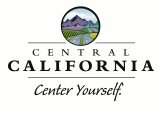
california central valley edc
888-998-2345
661-366-0756
Email: look@centralcalifornia.org
Realtor.com: Central Valley markets among nation’s hottest in New Year
Posted 11/30/2016 by Central Valley Business TimesRealtor.com: Central Valley markets among nation’s hottest in New Year
Central Valley Business Times
November 30, 2016 9:55am
• Sacramento ranks fourth in nation
• “The uptick we’ve already seen may price some first-timers out of the market”
Next year’s housing market in the U.S. will be a year of slowing, yet moderate growth, set against the backdrop of a changing composition of home buyers and a post-election interest rate jump that could potentially price some first-timers out of the market, according to the 2017 housing forecast released Wednesday by Realtor.com, a unit of News Corp [NASDAQ: NWS).
Within the forecast, there is good news for home sellers in much of the Central Valley. The Sacramento area is Number 4 among Realtor.com’s “Top 100 Housing Markets” for 2017.
Other Valley markets and where the website places them on its list:
• Stockton, 28th, with a 6.1 percent price gain and a 4.0 gain in home sales;
• Bakersfield, 35th, with a 5.3 percent increase in prices and a 4.5 percent gain in sales over 2016;
• Fresno, 43rd, with a 3.7 percent increase in home prices and a 5.8 percent boost in sales.
The 2017 national real estate market is predicted to slow compared to the last two years, across the majority of economic indicators. Home prices are anticipated to increase 3.9 percent and existing home sales are forecasted to increase 1.9 percent to 5.46 million homes. Interest rates are expected to reach 4.5 percent due to higher expectations for inflationary pressure in the year ahead.
Realtor.com is forecasting the homeownership rate will stabilize at 63.5 percent after bottoming at 62.9 percent in 2016. New home sales are expected to grow 10 percent, while new home starts are expected to increase 3 percent. It says.
The forecast is based on GDP growth of 2.1 percent, a 2.5 percent increase in the consumer price index and unemployment declining to 4.7 percent by the end of the year.
Prior to this month’s election, demographics and an improving economy were laying the foundation for a substantial increase in first-time buyers in 2017, but due to mortgage rate increases over the last few weeks Realtor.com predicts first timers will face new hurdles as they navigate the qualification and buying process.
These higher rates are associated with anticipation of stronger economic and wage growth next year, both of which favor buyers. However, higher rates will make qualifying for a mortgage and finding affordable inventory more challenging.
“We don’t expect the outcome of the election to have a direct impact on the health of the housing market or economy as we close out 2016. However, the 40 basis points increase in rates in the days following the election has caused us to increase our interest rate prediction for next year,” says Jonathan Smoke, chief economist for Realtor.com. “With more than 95 percent of first-time home buyers dependent on financing their home purchase, and a majority of first-time buyers reporting one or more financial challenges, the uptick we’ve already seen may price some first-timers out of the market.”
Top Housing Trends for 2017
Next year’s predicted slowing price and sales growth, increasing interest rates and changing buyer demographics are setting the stage for five key housing trends:
• Millennials and boomers will dominate the market
Next year, the housing market will be in the middle of two massive demographic waves, millennials and baby boomers – that will power demand for at least the next 10 years. Although increasing interest rates have prompted Realtor.com to lower its prediction of millennial market share to 33 percent of the buyer pool; millennials and baby boomers will still comprise the majority of the market. Baby boomers are expected to make up 30 percent of buyers in 2017 and given they’re less dependent on financing, they are anticipated to be more successful when it comes to closing.
• Midwestern cities will continue to be hotbeds for millennials
Midwestern cities are anticipated to continue to beat the national average in millennial purchase market share in 2017 with Madison, Wisconsin; Columbus, Ohio; Omaha, Nebraska; Des Moines, Iowa; and Minneapolis, leading the pack. This year, average millennial market share in these markets is 42 percent, far higher than the U.S. average of 38 percent. With strong affordability in 15 of the 19 largest Midwestern markets, Realtor.com expects this trend to continue in 2017 even as interest rates increase.
• Slowing price appreciation
Nationally, home prices are forecast to slow to 3.9 percent growth year over year, from an estimated 4.9 percent in 2016. Of the top 100 largest metros in the country, 26 markets are expected to see price acceleration of 1 percent point or more with Greensboro-High Point, North Carolina; Akron, Ohio; and Baltimore-Columbia-Towson, Maryland, experiencing the largest gains. Likewise, 46 markets are expected to see a slowdown in price growth of 1 percent or more with Lakeland-Winter Haven,
<-- Back

